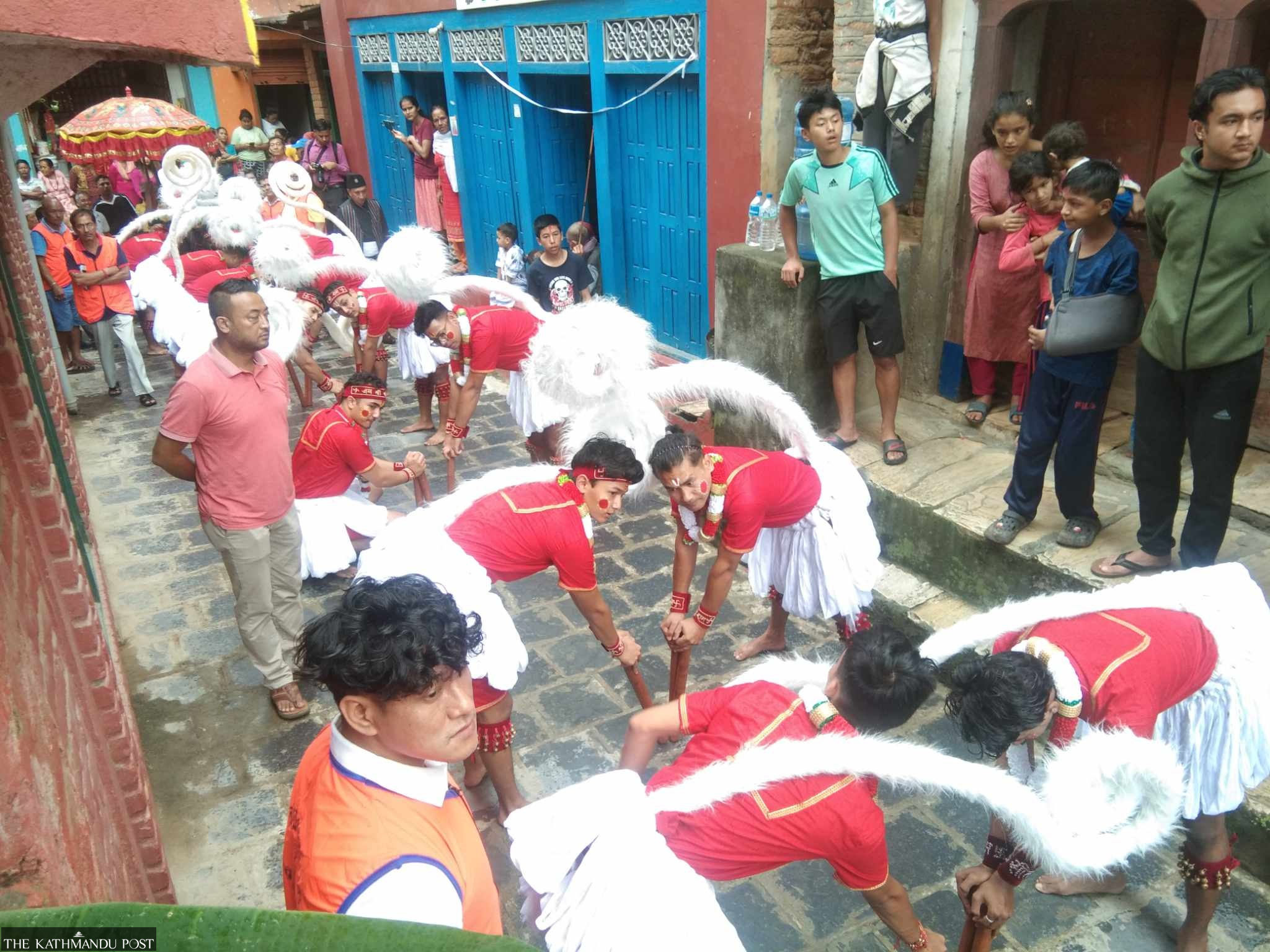Culture & Lifestyle
Celebrating 300 years of Hanuman dance
Youths carry forward a cultural legacy as they revive the historic dance in Baglung.
Prakash Baral
Thirteen Hanumans, dressed in red costumes with skirts made from cloth tied around their waists, danced to the beats of the instrument as they made their way to Narayan Chowk in Baglung Municipality-4. The event commenced with Pradhan Kaji Ishwor Malepati and chief priest Badri Prasad Shrestha arriving at Narayan Chowk, following a ritual at Hanuman Pauwa. In keeping with tradition, they walked in reverse.
The youth, dressed as Hanuman and embodying the spirit of Brahmacharya, kicked off the festivities with their dance. As the music played, some dancers lost their balance, prompting Kaji and volunteers beside them to lend support.
The dance procession led the Hanumans to the Ram temple, where they worshipped Ram. The much-anticipated Hanuman dance was finally showcased in the bustling street. After years of hiatus due to the pandemic, the event marked a joyous return, as expressed by Tirtha Prasad Shrestha, president of the Hanuman Nach Samrakhshyan Parisad.
Traditionally, the dance is performed from the first Tuesday of Bhadra, occurring exclusively on Tuesdays or Saturdays throughout the odd years, lasting until mid-Chaitra. However, the dance will be suspended if Ekadasi and Ausi coincide on a Tuesday. This unique cultural practice is believed to have originated in the Kathmandu Valley approximately 300 years ago. A document detailing the dance accounts remains preserved within the council, revealing records dating back 150 years.
Ishwor Malepati says, "The place is considered a mine of art and culture, but now we have preserved the Hanuman dance, which is not found even in the Valley." He acknowledged that while some of this tradition is supported by historical evidence, much remains steeped in legend. “Hundreds of years old art and culture are not found as written evidence,” he added, emphasising the importance of preserving such rich traditions for future generations.
Historian and advocate Kaji Gaunle Shrestha emphasised the significance of the Hanuman Dance as a symbol of the Newa people of Bhaktapur, who fled to Baglung during Nepal’s unification. They brought a rich tapestry of art and culture, with the Hanuman Dance as a cherished representation of their heritage.

Pragya Prem Chota, a former member of Nepal Pragya Pratisthan, noted that the Hanuman Dance has been preserved by some supporting artists who accompanied Singh. This preservation of art and culture continues in Baglung, where unique traditions thrive.
In his book, ‘Parbat Rajya ko Itihas’, Tek Bahadur Shrestha also referenced the significance of the Hanuman Dance, reflecting his deep interest in the arts and the region's cultural history. Advocate Kaji Gaunle Shrestha remarked, “This art is still alive in modern Baglung,” acknowledging the Newa community's efforts to maintain their traditions, even as certain forms, like woodwork, have faded from practice.
Hanuman is a significant character in the Ramayana, and his dance tradition is widely celebrated. However, this art form is facing extinction due to the time and effort it demands and a decline in youth participation. The dance typically features 13 to 17 pairs of Hanuman dancers. Cultural expert Prem Chota explains that this dance is believed to empower participants, connect them to Hanuman's strength and promote bravery and discipline.
Youths aged 16 to 40 participate in the dance after maintaining a period of Brahmacharya. It is a tradition for young men to perform the dance several times in their lives and to pass it on to others. Social leader Yubaraj Rajbhandari notes that the dance helps Newa youths stay disciplined, and participants from various communities, including Chhetri and Magar, have recently joined.
Since 2046 BS, the Hanuman Nach Samrakshyan Parisad has aimed to preserve this costly tradition through community donations. The dance requires musicians to play traditional instruments, and a Pradhan Kaji oversees the performance. Chota mentions that a minimum of 50-60 people is needed to present the dance, which is also performed for visiting dignitaries. Efforts are underway to register this cultural practice as part of global heritage.




 7.12°C Kathmandu
7.12°C Kathmandu.jpg)















